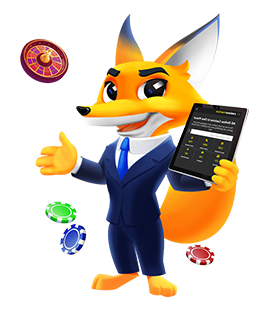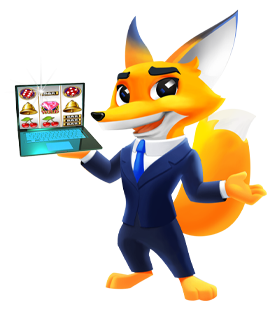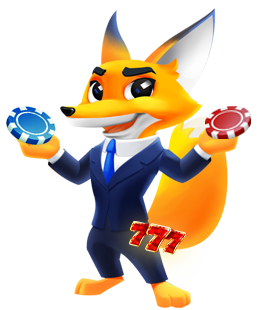Essential Blackjack Terms Every Player Should Know
Learning blackjack terms is the first step to mastering the game. If you’re a beginner, understanding these terms will help you follow the action. You can also make better decisions and enjoy the game without confusion. This guide is here to make it easy for you by breaking down both the common and advanced terminology. By the end, you’ll be ready to play confidently and take your blackjack skills to the next level!
Blackjack Terms for Beginners
In this section, I organize the blackjack terms and phrases into different categories and explain them from the very basics. This way, you’ll easily grasp the terms before entering the game.

Basic Blackjack Terms
Let’s start with the essentials! Below are the must-know terms covering the basics of the game, like who’s playing, what the dealer does, and how the cards work.
- Blackjack: The best possible hand in the game. It’s when your first two cards add up to 21, typically an Ace (worth 11 points) and a 10-point card (like a 10, Jack, Queen, or King).
- Hand: The set of cards you have during a round of blackjack. For example, if you’re dealt an 8 and a 6, that’s your hand, which totals 14.
- Action: The player's turn to decide what to do with their hand (hit, stand, double down, or split).
- Dealer: The person or system representing the casino in the game. The dealer gives cards to players and plays against them according to the casino’s rules.
- Player: You or anyone playing blackjack against the dealer.
- Deck: The set of cards used in the game. Blackjack is often played with multiple decks of 52 cards to make counting cards harder.
- House: The casino. The house is who you're playing against in blackjack and who sets the rules for the game.
- House edge: The casino's edge over players. In blackjack, the house edge is relatively small (around 0.5% in optimal play), meaning the casino expects to win about 50 cents for every $100 bet.
- Payout: The winnings if your hand beats the dealer’s. A typical blackjack payout is 3:2, which means that you win $3 for every $2 you bet if you hit blackjack. Read this article to know more about blackjack 3 to 2 payout.
- Odds: The probability of a certain outcome happening, such as getting a blackjack or the dealer busting. Good players use the odds to decide their best move.
Once you have grasped the basics, move on to more detailed terms in the next sections!

Card Value & Type Terms
Blackjack is all about the cards, and every card has a role to play. These terms explain the values and types of cards you’ll see during the game.
- Ace: A card that can count as 1 point or 11 points, depending on what benefits your hand more. For example, if you have an Ace and a 7, your total is 18; if you draw a 10 after that, the Ace counts as 1 to avoid going over 21. In this guide, I’ve shared some blackjack Ace rules you need to know, check it out!
- Paint: Refers to the face cards in a deck (Kings, Queens, and Jacks). They’re called “paint” because of their detailed, colorful artwork. Each is worth 10 points in blackjack.
- Ten-value card: Any card worth 10 points, including the 10, Jack, Queen, or King.
- Bust card: A card that makes your hand go over 21, causing you to bust and lose the round. For example, if you have 16 and draw a 7, you bust with a total of 23.
- Burn card: The first card taken out of the deck before the hands are dealt. The dealer burns this card to prevent players from gaining an advantage by seeing it. It’s common in both physical and online games for fairness.
- Upcard: The dealer’s face-up card that all players can see.
- Hole card: The dealer’s face-down card that is revealed after players finish their turns. The hole card, combined with the upcard, determines the dealer’s total hand.
- Cut card: A brightly colored plastic card placed into the shoe by a player/dealer to “cut” the deck after shuffling. It indicates when the dealer will reshuffle during the game, ensuring fairness.
Hand & Total Terms
Your hand decides your next move. These blackjack slang terms break down the different kinds of hands you can have and how they shape your strategy.

- Soft hand: An Ace-containing hand in which the Ace is valued at 11 points. Example: An Ace + 7 = Soft 18.
- Soft total: The total value of a soft hand where the Ace is counted as 11 points. This post will help you identify hard vs soft hand blackjack, check it out!
- Hard hand: A hand that does not contain an Ace, or contains an Ace but the Ace must count as 1 point to avoid busting. Example: 10 + 6 = Hard 16.
- Hard total: The total value of a hard hand, calculated without using the Ace as 11.
- Pat hand: A hand with a total between 17 and 21 and usually doesn’t require hitting. Example: 10 + 7 = Pat 17. Most players and dealers stand on pat hands.
You can read this article to understand more about hard & soft hand
Dealer & Deck Terms
The dealer and the deck are the backbone of blackjack, and understanding how they work helps you know what to expect during each round. These common blackjack terms explain everything from how cards are dealt, to what happens behind the scenes with shuffling and cutting the deck. I’ll also explain some of the game’s quirks.

- Deck: A standard set of 52 cards used in the game. Blackjack can use one deck or multiple decks.
- Single-deck: A blackjack game played with only 1 deck.
- Multiple-deck: A blackjack game that uses two or more decks shuffled together, often 4, 6, or 8 decks. Multiple-deck games make card counting harder and reduce the player's advantage compared to single-deck games.
- Round: A complete cycle of play where cards are dealt, players act on their hands, and the dealer completes their turn. Each round ends with a resolution (win, loss, or push) before starting the next one.
- Shuffle: The act of randomizing the order of cards in the deck(s) before dealing. Casinos often use automatic shuffling machines to save time and reduce opportunities for card counting.
- Preferential shuffle: A practice where the dealer reshuffles earlier than normal when a deck appears “favorable” to the player (i.e., when the count is positive). Casinos do this to nullify any advantage gained through card counting.
- Favorable deck: A deck where the remaining cards are advantageous to the player, usually containing more high cards (10s and Aces). This increases the chance of getting blackjacks or strong hands.
- Unfavorable deck: A deck where the remaining cards are advantageous to the dealer, often containing more low cards (2 – 6). This makes it easier for the dealer to avoid busting.
- Ten-poor deck: A deck with fewer 10-value cards than usual, reducing the chance of blackjacks or high totals for players. It’s typically unfavorable for the player.
- Ten-rich deck: A deck with more 10-value cards than usual, increasing the likelihood of blackjacks and stronger hands for players. Card counters look for ten-rich decks to increase their bets.
- Heads up: A blackjack game with only one player and the dealer. This format allows for faster play and more hands per hour.
- Shoe: A card-dispensing device used by the dealer to hold multiple decks. The shoe makes dealing faster and more secure, especially in games with 4, 6, or 8 decks.
- Shoe game: A blackjack game that uses a shoe to hold multiple decks (typically 4 to 8). It’s slower to reshuffle but reduces opportunities for card counters compared to single-deck games.
- Half-shoe: A premature reshuffle of the cards when approximately half (or less) of the shoe has been dealt. This disrupts card counters who rely on deeper penetration (i.e., more cards dealt) for accurate counts.
- Two-round: A technique sometimes used by casinos or dealers where they only deal two rounds from the shoe before shuffling. This technique greatly reduces the effectiveness of card counting by limiting how many cards are seen before a reshuffle.
Action Terms
What does the dealer do in the game and what’s your next move? Hit? Stand? Double down? These terms explain all the actions you can take during the game. Knowing them will help you keep up with the pace and make the best choices for every hand.
- Dealt: The distribution of cards at the beginning of the game. Each player is dealt two cards, and the dealer gets one upcard and one hole card.
- Hit: Request an additional card to try to improve your total without exceeding 21. You can keep hitting until you stand or bust.
- Draw a card: Another way of saying “Hit.”
- Hit 17 (H17): A rule where the dealer must hit if their total is a soft 17 (Ace + 6 = 17). This increases the house edge slightly because it gives the dealer a chance to improve their hand.
- Stand 17 (S17): A rule where the dealer must stand if their total is a soft 17. This is generally more favorable for players than H17.
- Stand/Stand pat: Decide not to take any more cards, keeping your current hand total. For example, if you have 19, you might stand since it's a strong total.
- Split: If your first 2 cards are of the same rank (e.g., a pair of 8), you can split them into two hands. To play both hands, you must place another bet equal to your original one. Read this post to learn about blackjack split rules!
- Double/Double down: You double your initial bet and receive one additional card only. Often used when you have a strong starting hand (e.g., 11) against a weak dealer upcard.
- D9: A rule some casinos use indicating you can only double down on totals of 9, 10, or 11.
- DA2 (Double on Any Two): A rule allowing you to double down on any initial 2-card hand, regardless of the total. This is more favorable for players than D9.
- DAS (Double After Split): You are allowed to double down on any split hand. For example, if you split two 8s and then get a 3 for one of your new hands (making 11), you can double on that hand.
- Surrender: Forfeit your hand and recover ½ of your original bet. You do this if you believe your chance of winning is very low.
- Early surrender: A variation allowing you to surrender before the dealer checks for blackjack. If the dealer has a potential blackjack, early surrender can be beneficial, but it’s rarely offered because it’s more favorable to players.
- Late surrender (LS): A more common variation where you can only surrender after the dealer checks for blackjack. If the dealer has blackjack, you can’t surrender; otherwise, you can choose to surrender and lose half your bet.
- NDAS (No Double After Split): A rule stating you cannot double down on hands that were created by splitting.
- NMSE (No Mid-Shoe Entry): A rule sometimes used in casinos that prevents new players from joining the table in the middle of a shoe. This is done to protect existing players from disruption and to manage card counting concerns.
- NRSA (No Re-Splitting Aces): You cannot split Aces more than once. If you split Aces and then draw another Ace, you’re not allowed to split again.
- RSA (Re-Split Aces): A more player-friendly rule allowing you to re-split Aces if you draw additional Aces. This can be a significant advantage because Aces are key to strong blackjack hands.

Blackjack isn’t just you against the dealer but a whole table of personalities and roles. These terms explain who’s who:
- First baseman: The player seated in the first position to the dealer’s left. After the cards are dealt, this player is the first to move.
- Ploppy: A casual, inexperienced, or unskilled blackjack player.
- Floorman: A casino employee who supervises the gaming tables. This person ensures fair play, resolves disputes, and manages dealer shifts and enforcing house rules.
- Anchorman: The player seated in the last position to the dealer’s right. The dealer plays their hand after this player has taken the final action.
- High roller: A player that frequently places huge bets and plays at high-stakes/VIP tables. These people may receive special treatment from the casino, such as complimentary rooms, meals, or transportation.
Card Situation Terms
Sometimes, the most important moments in blackjack happen in specific situations, like when you bust or when your hand ties with the dealer.

- Bust: A hand that totals more than 21 points, resulting in an automatic loss. If you bust, you lose immediately even if the dealer later busts. But all remaining player hands that haven’t already busted automatically win if the dealer’s hand exceeds 21.
- Push: A tie between the player and the dealer, where both hands have the same total (e.g., 20 vs. 20). In this situation, no one wins, and the player’s wager is returned.
Money & Bet Terms
Now, let’s talk about money! Blackjack is a betting game, and these terms cover everything from the size of your bet to the different types of chips you’ll see on the table.
- Bankroll: The amount of money you use specifically for blackjack. If you bring $200 to the casino to play blackjack, that’s your bankroll.
- Table limit: The minimum and maximum bets allowed at a blackjack table. For example, a table might have a limit of $5 minimum and $500 maximum per hand.
- Unit: The standard amount of money you use for a single bet, often a small percentage of your bankroll. For example, if your bankroll is $100 and you set $5 as your unit, that’s your typical bet.
- Bet spread: The range between your smallest and largest bets during a game. If you bet $10 on some hands and $50 on others, your bet spread is 1:5.
- Side bet: Optional bets made alongside the main blackjack hand, often with separate payouts. Some popular side bets are Insurance, Perfect Pairs, and 21+3. This post will guide you through some of the most popular blackjack side bets!
- Insurance: A side bet that pays 2:1 if the dealer has blackjack and is offered when the dealer's upcard is an Ace.
- Even money: A scenario when you have blackjack and the dealer’s upcard is an Ace, the dealer may offer “even money” (1:1 payout). Mathematically similar to taking insurance.
- Flat bet: Betting the same amount on every hand, without changing your bet size.
- Chip: The tokens or currency used to place bets at the table. Casinos use different colored chips to represent various denominations:
- Pink chip: A chip worth $2.50. Rarely used in blackjack but found in some casinos.
- Red chip: A chip worth $5, commonly used in low-stakes blackjack games.
- Green chip: A chip worth $25, typically used in mid-stakes games.
- Black chip: A chip worth $100, often seen at higher-stakes tables.
- Purple/Barney chip: A chip worth $500, used in high-stakes games. It’s nicknamed "Barney" because of its purple color, resembling the famous dinosaur.
- Yellow/Orange/Pumpkin chip: A chip worth $1,000, used in very high-stakes games. It’s called “Pumpkin” due to its orange or yellowish hue.
- Brown/Chocolate chip: A chip worth $5,000, used in VIP or elite high-stakes games. Rarely seen except in exclusive casino sections.
Understanding money and bet terms is crucial for managing your bankroll and making informed wagers in blackjack. You must familiarize yourself with these before you start playing so you can bet accurately and avoid confusion during payouts.
Card Counting & Strategy Terms
When you’re ready to up your game, these terms dive into advanced strategies like card counting and how to adjust your moves based on what’s happening at the table.
- Balanced Count: A card counting system where the total count returns to zero if you count through an entire deck. After counting all 52 cards, the total should balance out to zero.
- Running count: The current count as you keep track of the values of cards dealt during the game. For example, if you’ve counted a +2, +1, and -3 in consecutive rounds, your running count is 0. It’s the raw total and doesn’t consider how many decks remain in play.
- True count: The adjusted count based on the number of decks still in play. This makes the count more accurate and helps decide when to increase or decrease bets.
- Index: A specific true count value used as a trigger point for making a strategic decision. For example, an index might say to double down on a hard 10 only if the true count is +2 or higher. Index numbers guide on when to deviate from basic strategy based on the count.
- Deck penetration: Refers to how many cards or decks have been dealt from the shoe before the dealer reshuffles. A higher penetration (e.g., 70% – 80%) is ideal for card counters because it provides more accurate predictions.
- Hole-carding: A technique where a player tries to spot the dealer’s hole card (the facedown card) by observing the way the dealer handles the cards. If successful, this gives the player a huge advantage because they know the dealer’s exact hand. It’s not illegal but is frowned upon in most casinos and may lead to removal if caught.
- Spooking: A form of cheating where a partner sits behind the dealer to see the dealer’s hole card and signals it to the player. This is illegal and can result in criminal charges.
Casino Security, Procedures, and Responses to Players
Casinos take their games seriously, and these terms explain how they handle players and keep things fair. This behind-the-scenes stuff is good to know especially if you want to stay on the casino’s good side.

- 86’d: Casino slang for being expelled or banned from the property. If you’re “86’d,” you’ve been told to leave and not return.
- Back off: A warning or request from the casino asking a player to either lower their bets or stop playing a specific game. Unlike being 86’d, the player may still remain in the casino; just not play certain games or bet certain amounts.
- Barred: A formal notice that a player is not allowed to play in a specific casino (or group of casinos). Being barred is more permanent than a back-off. If a barred player re-enters, they may be charged with trespassing.
- Black book: Commonly refers to the “Nevada Gaming Commission’s List of Excluded Persons,” an official list of individuals banned from all Nevada casinos. Once placed in the Black Book, you cannot legally enter any Nevada gaming venue.
- Griffin book: A database or reference compiled by Griffin Investigations (historically), which listed known advantage players, cheaters, and card counters. Casinos used this resource to identify and monitor suspicious or high-profile players.
- Spooking: A form of cheating where a partner positions themselves behind the dealer to see the dealer’s hole card and secretly signals this information to the player. This is illegal and can result in criminal charges for both the spook and the receiving player.
- Surveillance Information Network (SIN): A shared database or communication network used by casinos to exchange information about suspicious players, cheaters, or known advantage players. It helps casinos quickly identify potential threats or card counters when they arrive on property.
Tips for Memorization Blackjack Terms
Memorizing all blackjack terms doesn’t have to be a chore. I have some tips to help you turn these terms into something fun and interactive while getting better at the game.

- Use flashcards. You should write the term on one side and its definition on the other. Review them regularly to reinforce your memory.
- Organize words into logical categories to form mental associations. You can refer to my classification above. This helps your brain form natural connections between related concepts.
- Pair each term with a simple image or scenario to strengthen memory. For example, imagine a giant “cut card” physically dividing the deck to remember its purpose.
- Apply the terms while playing free blackjack games online, or keep them in mind during live play. Seeing the terms in action will strengthen retention.
- Teach someone else. If you can explain a term to someone else, you really know it. I recommend trying teaching a friend; they’ll learn, and you’ll get even better at remembering.
Remember to go over the terms often, but keep it short and sweet. A few quick reviews here and there are way better than cramming all at once. Soon, you’ll be throwing them around like a pro at the blackjack table!
Wrap Up
Now that you’ve got these blackjack terms down, you can walk up to the table feeling totally at ease. You’ll know exactly what everyone’s talking about and won’t miss a beat with the dealer or other players. Whether you’re playing just for fun or going all-in on strategy, having the right vocabulary helps you stay in the game longer and enjoy it more. So go ahead, put these terms to use, and let the good hands roll!















